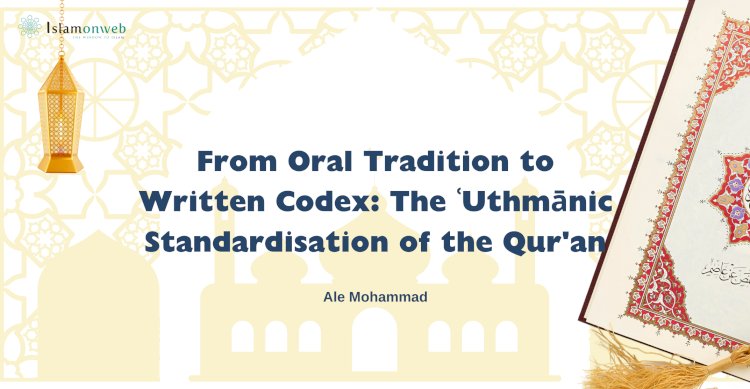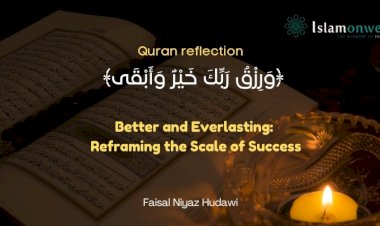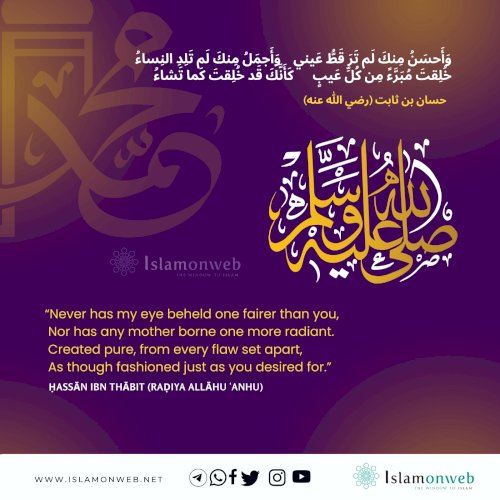From Oral Tradition to Written Codex: The ʿUthmānic Standardisation of the Qur'an
The preservation and compilation of the Qur'an stand as the most precious moments in Islamic history, marked by both divine intervention and human effort. The foundation of this process lies in the belief that the Qur'an is the direct and literal word of Allah, revealed to the Prophet Muhammad ﷺ through Angel Jibrīl (Gabriel) over a span of 23 years. This divine safeguarding is affirmed within the Qur'an itself, where Allah promises protection against any corruption or alteration:
"Indeed, it is We who sent down the Qur'an, and indeed, We will be its guardian" (Qur'an 15:9).
This assurance underpins the strong belief in the Qur'an's preservation.
The preservation of the Qur'an commenced from the moment the Prophet ﷺ received its first revelation. During his lifetime, each revealed verse was recited by the Prophet ﷺ to his followers in congregational settings, fostering immediate memorisation. Oral transmission played a central role in this process. Alongside individual memorisers (huffāẓ), the Muslim community engaged in collective learning and teaching practices to ensure the Qur'an's retention.
The Prophet ﷺ actively encouraged memorisation, often leading prayers with varying verses to deepen their impact on his followers' hearts. Annually, he would review the Qur'an with Angel Jibrīl in a dedicated session, a practice that increased to two reviews during his final year. This "final review" was a momentous event, confirming the precise arrangement and content of the Qur'an as it was meant to remain.
By the time of the Prophet's ﷺ passing, numerous companions had memorised the entire Qur'an, ensuring its preservation both orally and in written form. This dual approach—oral tradition and written documentation—laid the foundation for its enduring transmission.
Compilation and Standardisation of the Holy Qur'an
The Battle of Yamama in 12 AH resulted in the martyrdom of many Qur'an memorisers (huffāẓ), raising concerns about the preservation of the Qur'an. This event prompted Caliph Abu Bakr to initiate the first official compilation of the Qur'an. He entrusted Zayd ibn Thābit, a trusted scribe of the Prophet ﷺ, with the task of collecting and authenticating the verses. To ensure accuracy, verses were verified with the testimony of two reliable witnesses. The resulting codex was entrusted to ʿUmar and later passed to Ḥafṣa, one of the Prophet’s ﷺ wives.
As Islam spread to regions with diverse linguistic backgrounds, differences in recitation and pronunciation began to emerge among new Muslims. These variations led to disputes, posing a risk to the unity of the Qur'an. Recognising the seriousness of the situation, Caliph ʿUthmān initiated the preparation of a standardised version of the Qur'an to preserve its unity.
ʿUthmān formed a committee, headed again by Zayd ibn Thābit, to standardise the Qur'anic text. The committee ensured the text adhered to the dialect of Quraysh, the language in which it was originally revealed. The process involved rewriting the mushaf (codex) and burning all other written materials of the Qur'an to eliminate variants.
The resulting ʿUthmānic codex was distributed to major Islamic centres, along with instructions for accurate recitation. However, scholarly debate arose regarding whether the codex encompassed all seven aḥruf (modes of recitation) or a single ḥarf. Some scholars argue that the ʿUthmānic codex incorporated only one ḥarf to simplify recitation for the broader Muslim community, while others suggest it retained elements of all seven aḥruf.
The original codex was written without diacritical marks or vowelisation, allowing for multiple permissible readings within the boundaries of the Arabic script. This flexibility preserved the richness of the Qur'anic recitation while maintaining textual consistency.
The Ordering of Sūrahs: A Matter of Ijtihād
The arrangement of the Qur'an's 114 chapters (sūrahs) has been a topic of scholarly discussion. Two main views exist: one asserts that the sequence was divinely mandated, while the other suggests that the companions determined the order through ijtihād (independent reasoning). The order established in the ʿUthmānic codex has since been unanimously accepted by the Muslim ummah.
While there was initial opposition to codification from some companions, such as ʿAbdullāh ibn Masʿūd—who felt his contributions were overlooked—scholars widely believe that he ultimately accepted the standardisation. His acceptance highlighted the importance of unity in preserving the Qur'an and maintaining harmony within the Muslim community.
Codices in the Era of Caliph ʿUthmān
The production and regional distribution of Qur'anic codices under Caliph ʿUthmān ibn ʿAffān represents a critical chapter in Islamic history, ensuring the preservation and standardisation of the Qur'an across the rapidly expanding Muslim empire. By dispatching codices to major Islamic regions, ʿUthmān aimed to safeguard the Qur'an's integrity against regional variations in recitation and pronunciation.
According to the consensus among learned scholars, four main codices were distributed to key centres of the Islamic world. One codex remained in Madīnah, while the others were sent to Basra, Kūfah, and Shām (Greater Syria). These codices served as authoritative references to resolve discrepancies in Qur'anic recitation. Scholars such as Abū ʿAmr al-Dānī, al-Jaʿbarī, and Ibn al-Jazarī document instances of disputes over recitations that underscored the need for this standardisation.
While the consensus focuses on four main codices, other accounts suggest a greater number were produced. Abū Ḥātim al-Sijistānī states that seven codices were created, with additional copies sent to Makkah, Yemen, and Bahrain. Ibn Kathīr corroborates this view but replaces Bahrain with Egypt.
Ibn al-Jazarī takes this further, suggesting that eight codices were produced, including ʿUthmān's personal copy. Al-Yaʿqūbī adds another codex, bringing the total to nine, and mentions its distribution to the region of al-Jazīrah.
The variations in these historical accounts indicate that the distribution of codices likely occurred in stages. Regions facing internal conflicts over Qur'anic readings, such as Basra, Kūfah, and Shām, were prioritised in the initial dissemination. This strategic approach ensured that areas most affected by disputes received authoritative references promptly, establishing a lasting system for its transmission and ensuring the text's accuracy and consistency across generations.
Alongside the distribution of codices, it is noted in some sources that Caliph ʿUthmān also sent a reciter (قَارِئ) with each codex. Although not universally documented in earlier accounts, this practice underscores the vital role of oral transmission in preserving the Qur'an. The inclusion of reciters ensured that the correct recitation (tajwīd) and pronunciation of the Qur'an were maintained, complementing its written preservation.
The Meticulous Process of Copying Codices
The copying of these codices was carried out with extraordinary precision. Early manuscripts provide evidence of a meticulous approach, particularly in adhering to orthographic conventions (الرَّسم). For instance, a study by Marijn van Putten examined the spelling of the word niʿmat (blessing), which appears 23 times in the Qur'an, across 14 early manuscripts. The research revealed a consistent pattern in spelling—either as نعمت or نعمة—depending on the context of the verse. This consistency suggests that all the codices were derived from a single written archetype, reflecting the high level of accuracy in the copying process.
The precision of these codices earned significant recognition among early Islamic scholars. For instance, Imam Mālik highlighted the necessity of adhering to the original orthographic conventions (الرسم) when producing future copies of the Qur'an. However, allowances were made in specific cases to accommodate evolving orthographic practices.
A key scholarly debate revolves around whether the rasm (orthography) of the ʿUthmānic codex was tawqīfī (based on Prophetic instruction) or iṣṭilāḥī (derived from the customary practices of the Prophet's ﷺ companions). While some argue that the orthography reflects Prophetic guidance, others suggest it was shaped by the linguistic norms of the time.
The combination of meticulous written preservation and the role of reciters in ensuring accurate oral transmission reflects the dual approach employed during ʿUthmān’s era, safeguarding the Qur'an's integrity for future generations.
Tawqīfī vs. Iṣṭilāḥī Orthography
Scholars have long debated whether the rasm (orthography) of the ʿUthmānic codex was tawqīfī (divinely instructed through the Prophet ﷺ) or iṣṭilāḥī (a product of the companions' customary spelling practices). Ghānim Qaddūrī al-Ḥamad, for instance, contends that the rasm was iṣṭilāḥī, reflecting the companions' linguistic conventions. Despite this, it gained obligatory status through the consensus (ijmāʿ) of the companions, ensuring its acceptance and continuity.
Scholars such as Abū Bakr al-Bāqillānī debated whether strict adherence to the rasm was mandatory. The prevailing opinion, however, held that such adherence was essential to maintain the unity between the rasm and the authorised modes of recitation (qirāʾāt). This consensus ensured that the Qur'an was preserved in its entirety while accommodating the richness of its linguistic diversity.
Despite the remarkable uniformity of the ʿUthmānic codices, scholars like al-Dānī identified 36 points of minor variation across the four main codices. These variations, constituting less than 0.01% of the Qur'anic text, typically involved subtle differences, such as:
- The presence or absence of the letter و in verses like 5:53.
- The inclusion of the two-letter word هو in 57:24 in certain codices.
Importantly, these differences were not considered scribal errors. Instead, they reflected authentic variant recitations of the Qur'an that were orally transmitted by the Prophet Muhammad ﷺ. Early scholars like Abū ʿUbayd stressed that all these variations were valid and represented the Divine speech of Allah. Consequently, they were deemed acceptable for recitation in prayer.
The inclusion of minor regional variations in the ʿUthmānic codices was intentional, preserving multiple authentic readings that corresponded to various dialects and modes of recitation. By accommodating the linguistic diversity of the growing Muslim community, the production and distribution of the ʿUthmānic codices safeguarded the Qur'an's integrity. This monumental effort standardised the text while retaining its variant recitations.
Abou the author
Ale Mohammad a degree research scholar from Darul Huda Islamic University, Bengal Campus, specialising in Islamic Studies and Islamic Jurisprudence.
References
- Qur'an 15:9
This verse explicitly states Allah's promise to protect the Qur'an from corruption. Referenced translations include Sahih International and others. - The Role of Oral Transmission in Qur'anic Preservation
- Al-Suyūṭī, Al-Itqan fi ʿUlum al-Qur'an
A foundational text on Qur'anic sciences, emphasising the significance of oral transmission. - The Battle of Yamama and the Need for Preservation
- Al-Ṭabarī, History of the Prophets and Kings
Historical accounts detail the martyrdom of many huffāẓ and the resulting impetus for Qur'anic compilation. - Zayd ibn Thābit’s Role in Compilation
- Ibn Saʿd, Kitab al-Tabaqat al-Kabir
Chronicles Zayd's strict verification process for compiling verses of the Qur'an. - The Transfer of the Mushaf to Ḥafṣa
- Al-Suyūṭī, Al-Itqan fi ʿUlum al-Qur'an
Documents the preservation of the compiled Qur'anic text under Ḥafṣa’s care. - Instructions to Write the Qur'an in the Quraysh Dialect
- Al-Ṭabarī, History of the Prophets and Kings
Describes ʿUthmān’s directive to standardise the Qur'an in the Quraysh dialect for linguistic authenticity. - ʿUthmān’s Standardisation of the Qur'an
- Ibn Saʿd, Kitab al-Tabaqat al-Kabir
Details the formation of the committee led by Zayd ibn Thābit and the compilation process. - Seven Modes of Recitation (Aḥruf) and the ʿUthmānic Codex
- Ibn al-Jazarī, Al-Nashr fi al-Qirāʾāt al-ʿAshr
Explores the inclusion or exclusion of the seven aḥruf in the ʿUthmānic codices. - Arrangement of the Surahs
- Al-Khaṭṭābī, Maʿalim al-Sunan
Discusses the debate on whether the arrangement of surahs was divinely mandated or determined through ijtihād. - Codices Distribution and Variations
- Ibn al-Jazarī, Al-Nashr fi al-Qirāʾāt al-ʿAshr
Offers a detailed analysis of the number and distribution of the ʿUthmānic codices. - Al-Dānī, Al-Muqniʿ fi al-Qirāʾāt
Provides insights into regional variations and the history of Qur'anic readings.
- Orthographic Practices in the ʿUthmānic Codex
- Ghānim Qaddūrī al-Ḥamad
Discusses whether the rasm was tawqīfī or iṣṭilāḥī, contributing to the debate on Qur'anic orthography.
Disclaimer
The views expressed in this article are the author’s own and do not necessarily mirror Islamonweb’s editorial stance.
























Leave A Comment